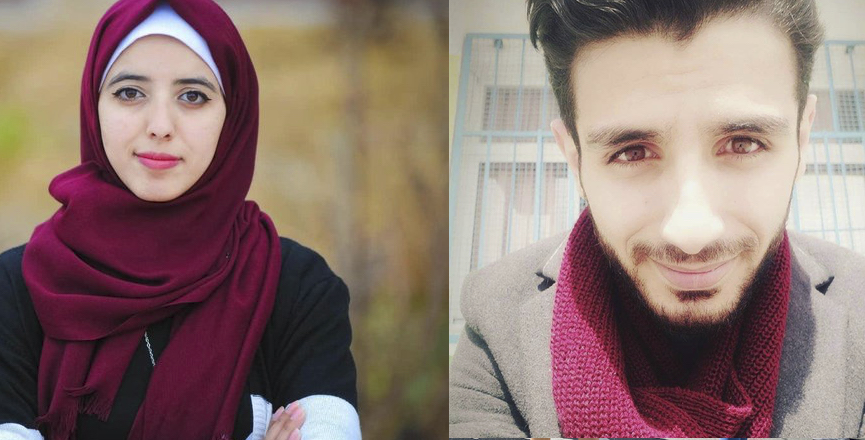When was the last time you heard about Gaza? Probably when mention of “Hamas rockets” hit the airwaves and broadcasters reported that Israel had assassinated Islamic Jihad commander Abu al-Ata in retaliation for Gazan attacks on Tel Aviv.
But context is everything. Did you also hear the backstory? The one that the mainstream media eclipsed, leaving the unsuspecting public reliant on that all-too-familiar earworm: “Israel has the right to defend itself”?
Whatever rockets reached Tel Aviv, these scarcely touched one Israeli and they were carried out in response to not one incident, but a sustained period of daily Israeli provocations, punctuating the whole of 2018 and 2019. Throughout that period, Israel killed more than 320 Gazans and wounded over 36,000 at the peaceful weekly protests of the Great March of Return — protests against Israel’s blockade of Gaza and occupation of the West Bank.
Between January and September 2019 alone, the Israeli military killed a total of 70 Palestinians in Gaza and injured 11,000 more. No Israelis were killed by Gazan militants during the same period. Throughout 2019, the IDF invaded Gaza on at least 54 occasions and carried out numerous airstrikes.
How do Israel’s regular killings of Palestinians compare with the decidedly rare damage inflicted on Israel by Hamas rockets? They do not. There is no comparison. A military superpower that fires heavy artillery into a besieged enclave such as Gaza is tantamount to a jailer firing tear gas and dangerous projectiles into an imprisoned person’s cell. The prisoner can barely respond in kind. He is bereft of effective weaponry, barred in, and scarcely able to defend himself. His few acts of defiance are criminalized and further punished. At every turn, the jailer has the upper hand — the capacity to stymie the slightest action. The jailer’s “defensive” assaults make a mockery of the idea of self-defence.
How well do Canadians grasp this gross injustice? Do statistics suffice to convince them that Gazans are suffering a tragic fate at the hands of their Israeli occupiers — not as “terrorists,” but as average human beings, like you and me? To many, a barrage of statistics produces information overload. Readers’ eyes tend to glaze over figures. Such abstractions have no impact. And the Western media knows this well. Referring to Palestinians largely as casualties or as the “collateral damage” of military operations, the media has typically deployed numbers to dehumanize Palestinians and consign them to arid data.
To be clear, the need for a precise accounting of dead and injured Palestinians cannot be underestimated; it is indispensable for setting the record straight amid bias and misrepresentation. But statistical records alone are not enough to raise public awareness. They are a poor reflection of a besieged people. Typically seen as pawns of rocket-firing Hamas militants or youth “rampaging” at the fence of Khan Younis, Gazans remain shrouded in the darkness of the public’s ignorance.
How many Canadians see the significance of the Great March of Return as the Palestinians’ rightful demand to go home — to those razed or occupied villages in Israel from which an earlier generation of Gazans was expelled 70 years ago? How many register the significance of Israel’s 14-year blockade? How many understand that this draconian stranglehold over Gaza has devastated the Palestinian economy, deprived people of their bare necessities, rationed electricity to four hours a day, and contaminated 90 per cent of Gazans’ drinking water?
Israel’s incarceration of the Gazan people has been an unrelenting daily war on innocent civilians for more than a decade. But only news of “terrorist rockets” and those “defensive” Israeli military operations, which have left Gaza in a state of massive urban wreckage, reaches our airwaves.
Seemingly remote from Canadian concerns, Gaza’s catastrophic condition is closer to us than most think; it encapsulates the global eco-disaster we all share as inhabitants of a sick planet. Canadians, like all humanity, are trapped in a world convulsed by a feverish ecology. The plight of Gazans should awaken us to our shared entrapment. As they offer us a glimpse into our collective fate, these Palestinians also provide a model of unflinching resistance. For despite their life-threatening challenges, they press on, fighting off pangs of despair and pursuing freedom against great odds. In many ways, they are leaders in survival, and they show us the strength, ingenuity, and justice-led politics that will be required to weather the global crisis awaiting us all.
Among these shining lights is a group of young Gazan writers. They call themselves WANN, We Are Not Numbers. Storytellers of everyday life, these young authors have turned their personal experiences of economic austerity and ecological devastation into narrative testimonies of endurance to expose to the world how Palestinians survive a draconian military siege. Their accounts are both joyful and sad. Each is an appeal to the world to see Gazans in their veritable humanity — as ordinary people with basic human needs, desires, and dreams.
A forthcoming webinar featuring two of their members will send a powerful message that the struggle for social justice in defense of oppressed peoples is also a fight for climate justice and that WANN’s stories may one day be everyone’s narrative — everyone’s record of survival.
We Are Not Numbers (WANN) is a group of young writers from Gaza who have turned their personal experiences of economic austerity and ecological devastation into narrative testimonies of survival. On December 15, 2019 at 12 p.m, Eastern, Independent Jewish Voices Canada (IJV) will host a webinar featuring two members of WANN, Asmaa Tayeh and Issam Adwan. Visit the IJV website for more info, including the link to register.
Michelle Weinroth is a member of Independent Jewish Voices Canada. Her published work focuses on 19th-, 20th-, and 21st-century propaganda.
Image: IJV




